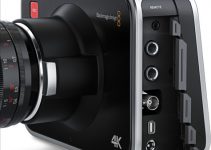The worst nightmare to any creator, be it a photographer, a filmmaker or even a designer is data loss. The unspoken terror that dominates this digital age is with no doubt the possibility that in a blink of an eye all of your data could be gone, for whatever reason.
This can happen on many levels, it may happen when you’re archiving, and that would probably be the less damaging one, but it may also happen as soon as you come back to your workspace and try to ingest the footage. What can you do if your card gets corrupted? After being resuscitated for the stroke you’ve got, what are you going to do? Here, Tyler Casey will share his experience on how to troubleshoot the situation.
So, as we said, you get back to your station, you’re a beginner filmmaker, or maybe this was a low budget shooting, so you do not have a backup from your external recorder, it’s all in that card. You pop it in and you get this message saying your card is corrupted.
First of all, don’t panic. We’re going to discuss a Windows solution, but there are equivalents for MacOS and even some very powerful open source tools on Linux for this as well.
So, the first step: do not format. It may seem superfluous to say it, but not formatting is the best thing to keep more chances of your footage recovering. It may not be impossible but you’re taking away a few odds from the equation, so better leave the card as it is. If instead, you proceed to formatting, you may drop the chances of recovery a lot; even more if instead of doing a quick format you use a complete format.
The tool in question suggested in this video is EaseUS, a useful app with a nice interface where you can just choose the drive that is giving problems, launch the scan and wait for the magic to happen. The less you mess with it, the better. Just let the voodoo flow through the computer and you’ll get a nice folder with all the images and videos that the software could recover.
The program is not even expensive, the lifetime license is more or less 70 bucks, and that’s for a single payment, not any of these subscription models that everyone seems to be adopting these days. The success rate seems to be quite good too.
So, if you ever find yourself in a situation like this, you can give it a try. If you are more experienced with computers and want to try to open a terminal, on Linux there will be some options that come for free like PhotoRec, but if you prefer a visual interface that is easier to use, this is the right choice.
As a final suggestion, if you would like to avoid this situation altogether, or if you are dealing with some kind of “I-cannot-lose-this-stuff” situation, you’re better off with a backup of the footage from the beginning. A small Atomos recorder, be it through SDI or HDMI port, can be a small investment that will save you from even thinking of this kind of situations.
[source: Tyler Casey]
Disclaimer: As an Amazon Associate partner and participant in B&H and Adorama Affiliate programmes, we earn a small comission from each purchase made through the affiliate links listed above at no additional cost to you.


